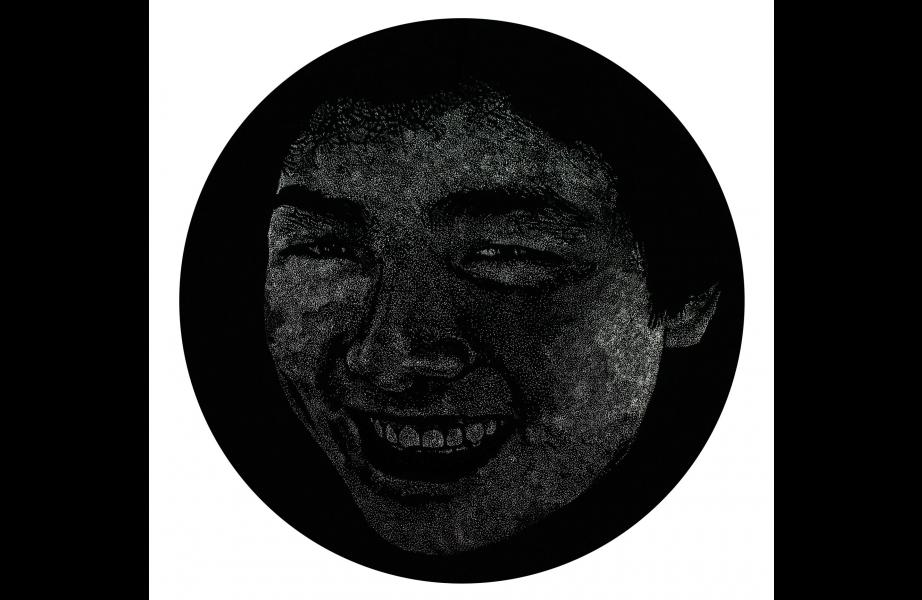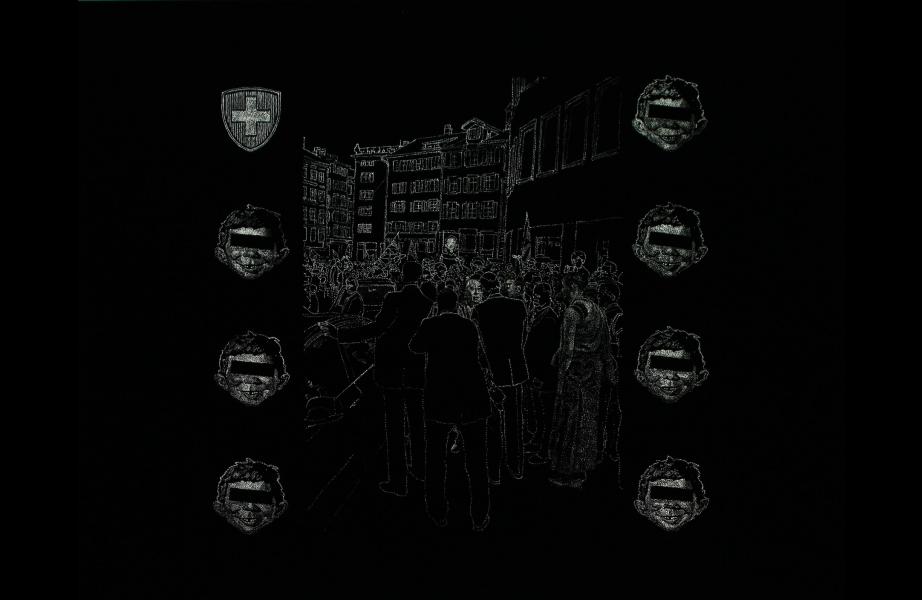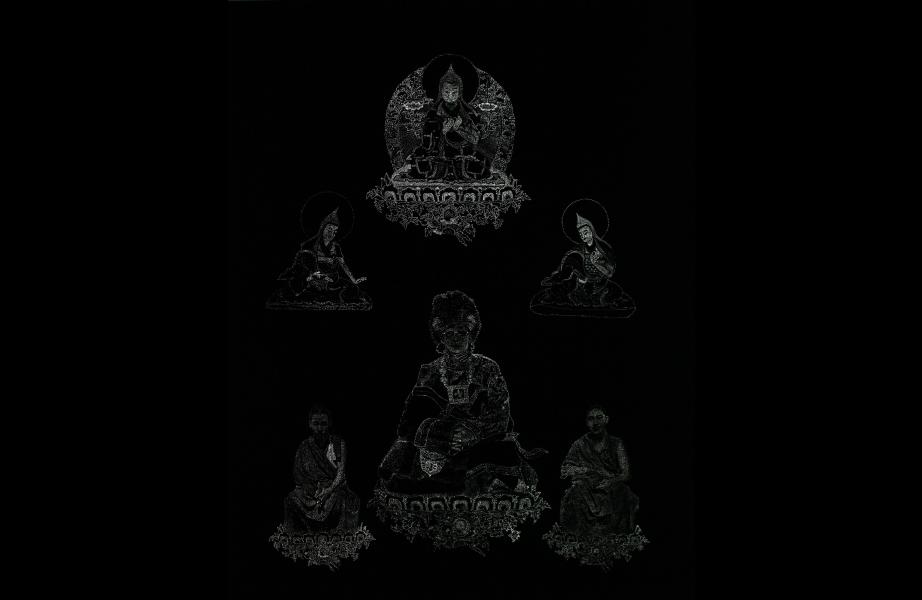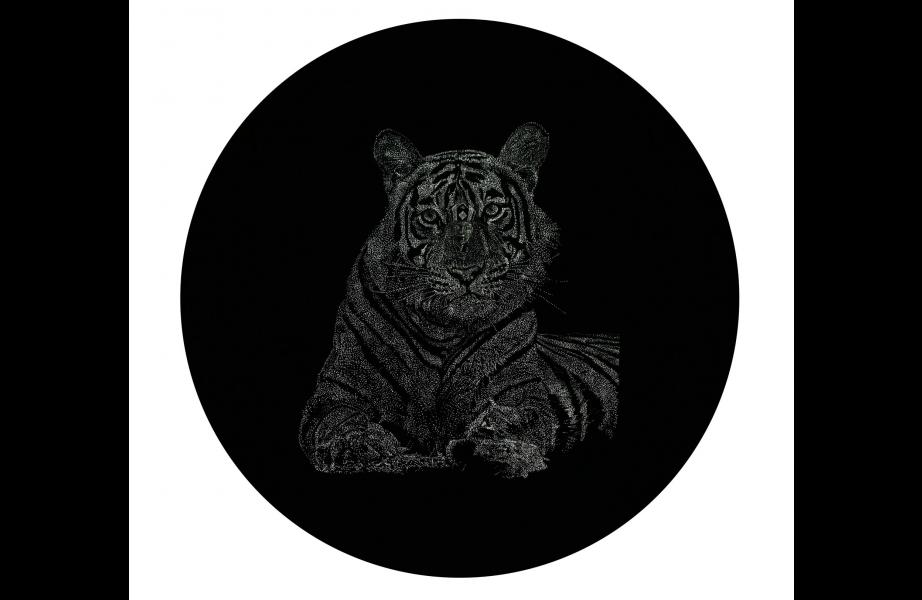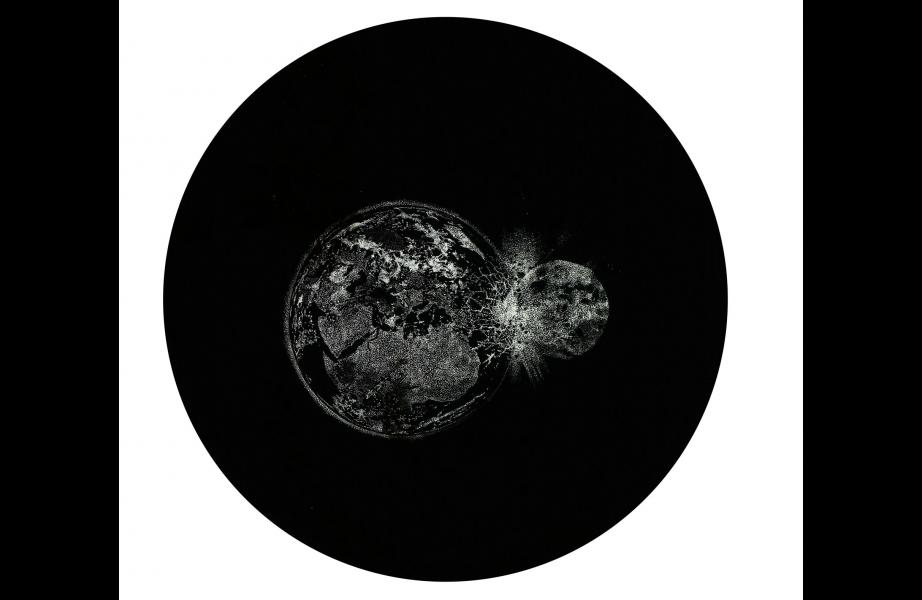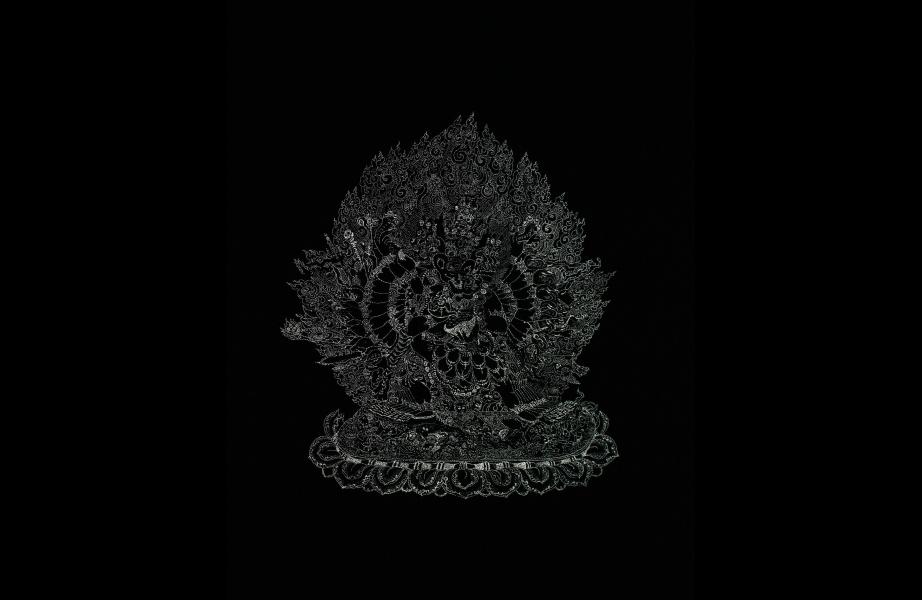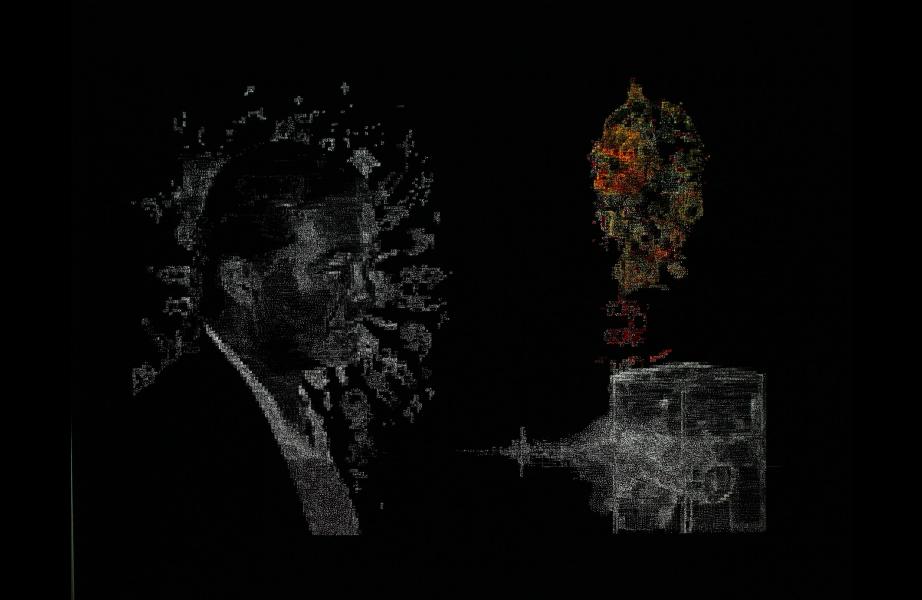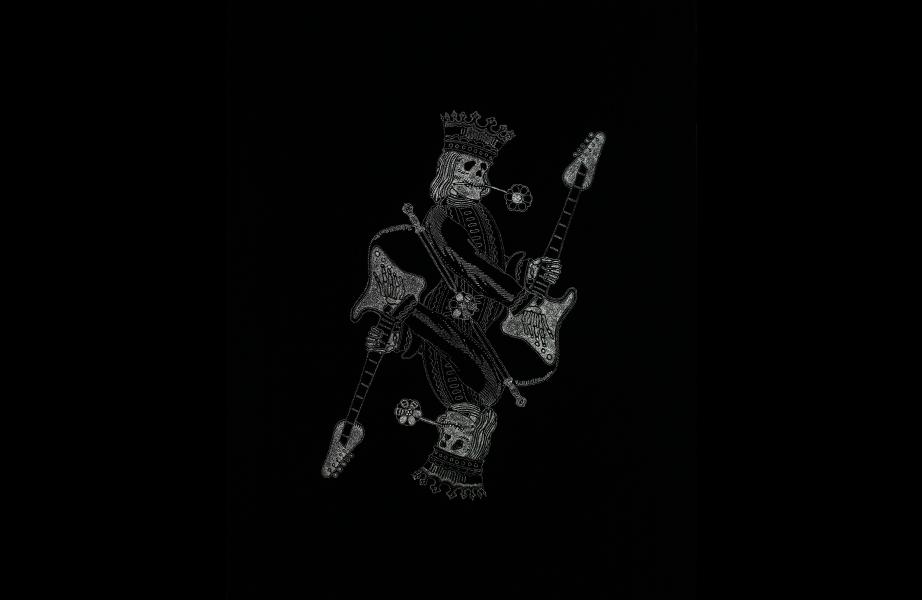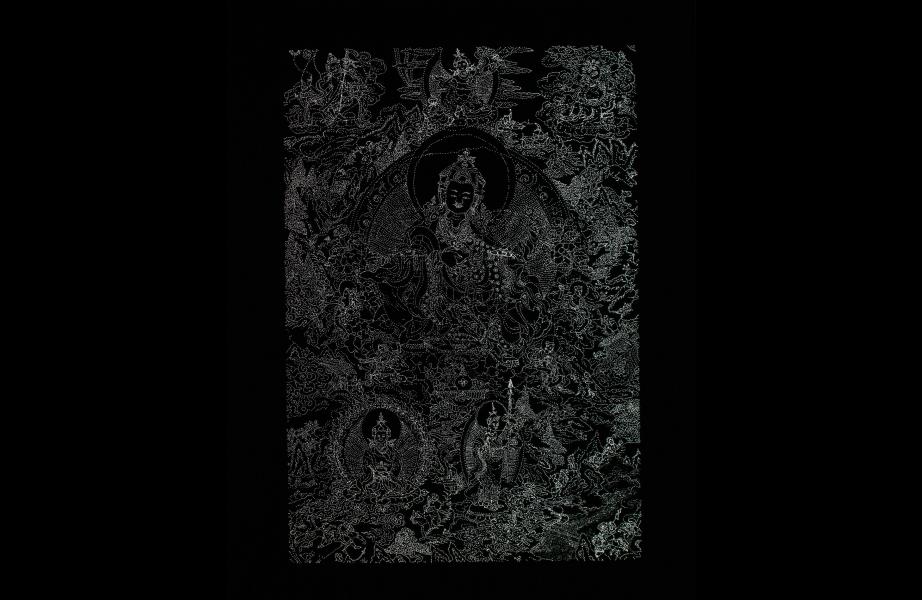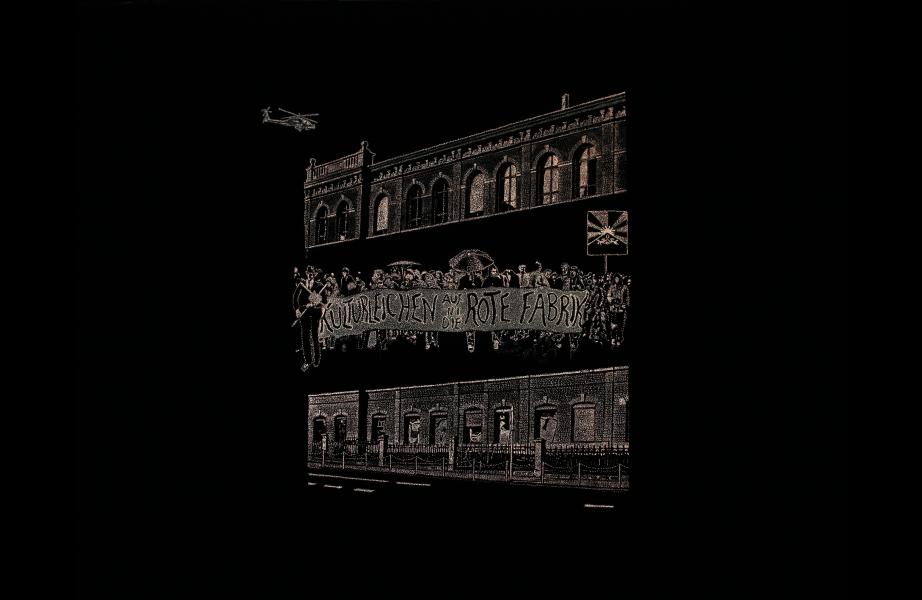Kesang Lamdark: 108
2008
The number “108” has meanings in many religions. In Tibetan Buddhism, it is said that the number is the product of multiplying the twelve months of the year by the nine planets. Other schools of Buddhism ascribe to the idea that 108 comes from taking "the six senses” (sight, sound, smell, taste, touch,…
The number “108” has meanings in many religions. In Tibetan Buddhism, it is said that the number is the product of multiplying the twelve months of the year by the nine planets. Other schools of Buddhism ascribe to the idea that 108 comes from taking "the six senses” (sight, sound, smell, taste, touch, and consciousness) and multiplying them by three reactions (positive, negative, or indifference) to make eighteen "feelings."
In Hinduism, Hindu deities have 108 names, while in Gaudiya Vaishnavism (Hare krishna) there are 108 gopis of Vrindavan. Recital of these names is often accompanied by the counting of a 108-beaded mala necklace, which is considered sacred, and often done during religious ceremonies. The recital is called namajapa. Accordingly, a mala usually has beads for 108 repetitions of a mantra.
In late 2008, Kesang Lamdark was asked to participate in the 108 project along with twelve other artists from around the world including Gonkar Gyatso, Shane Cotton and Vernon Ah Kee. The process of making 108 works becomes a meditation on the qualities, issues, hopes, and prayers that are specific to them. The large variance of interpretations regarding the number 108 leaves each artist room to come up with their own explanation that honors the others’, but is personal. Lamdark uses Plexiglas, LED light and wood to produce this series of luminescent lightboxes that collectively depict episodes from his “Neo-trantric” art. Hybridizing iconography from Tibetan and Western visual cultures, the artist brings to us 108 stories of his past, present and future.
[read full article]
